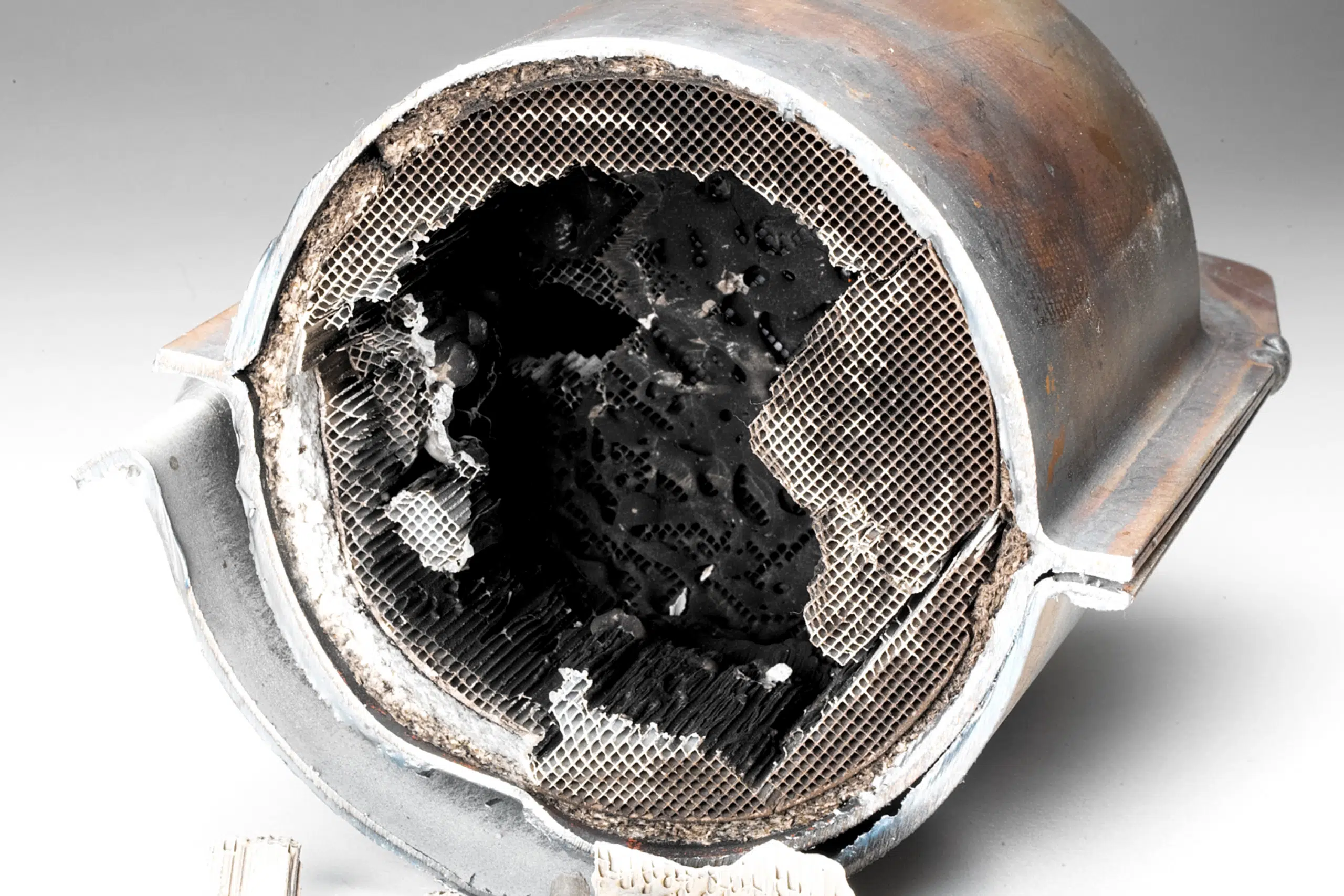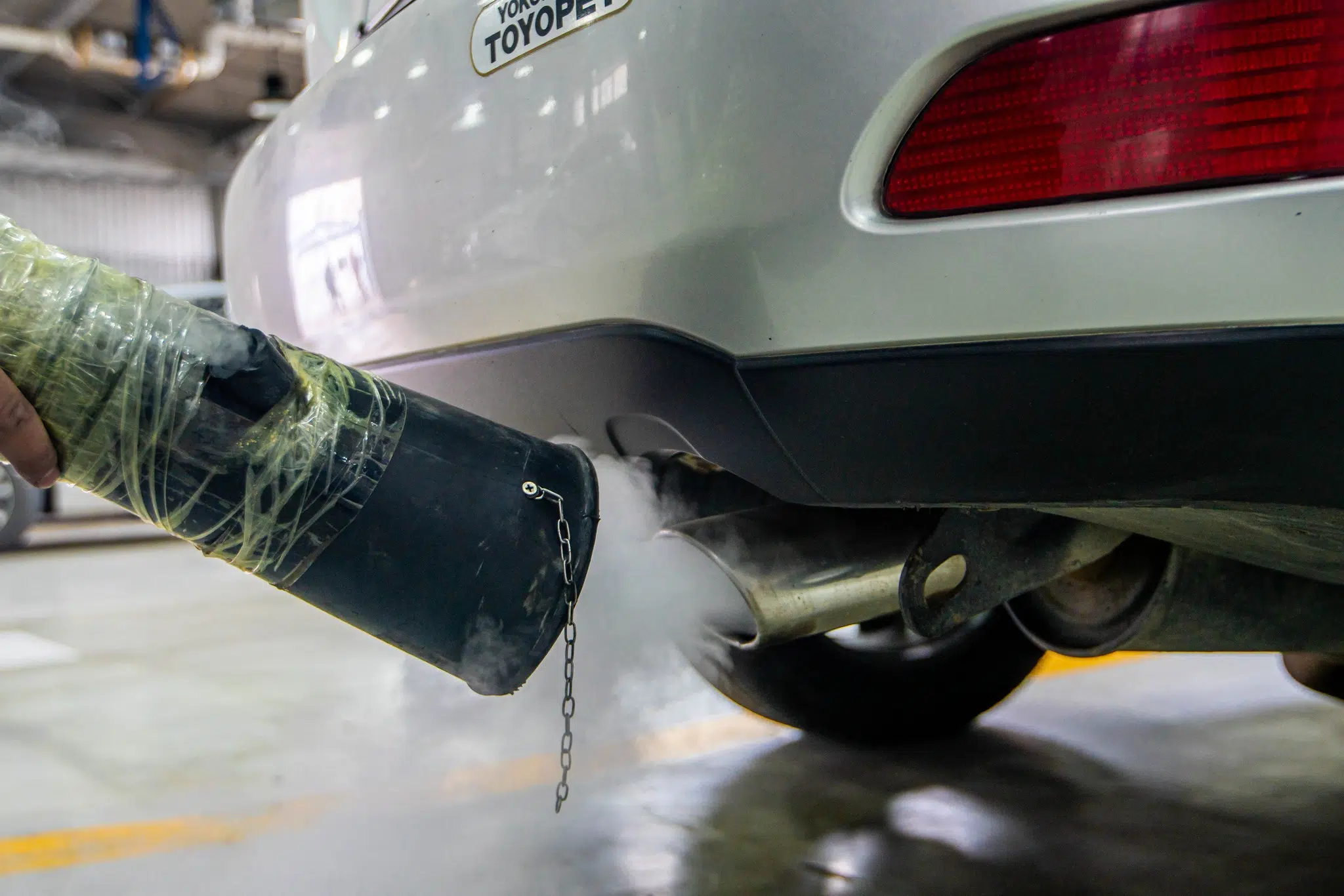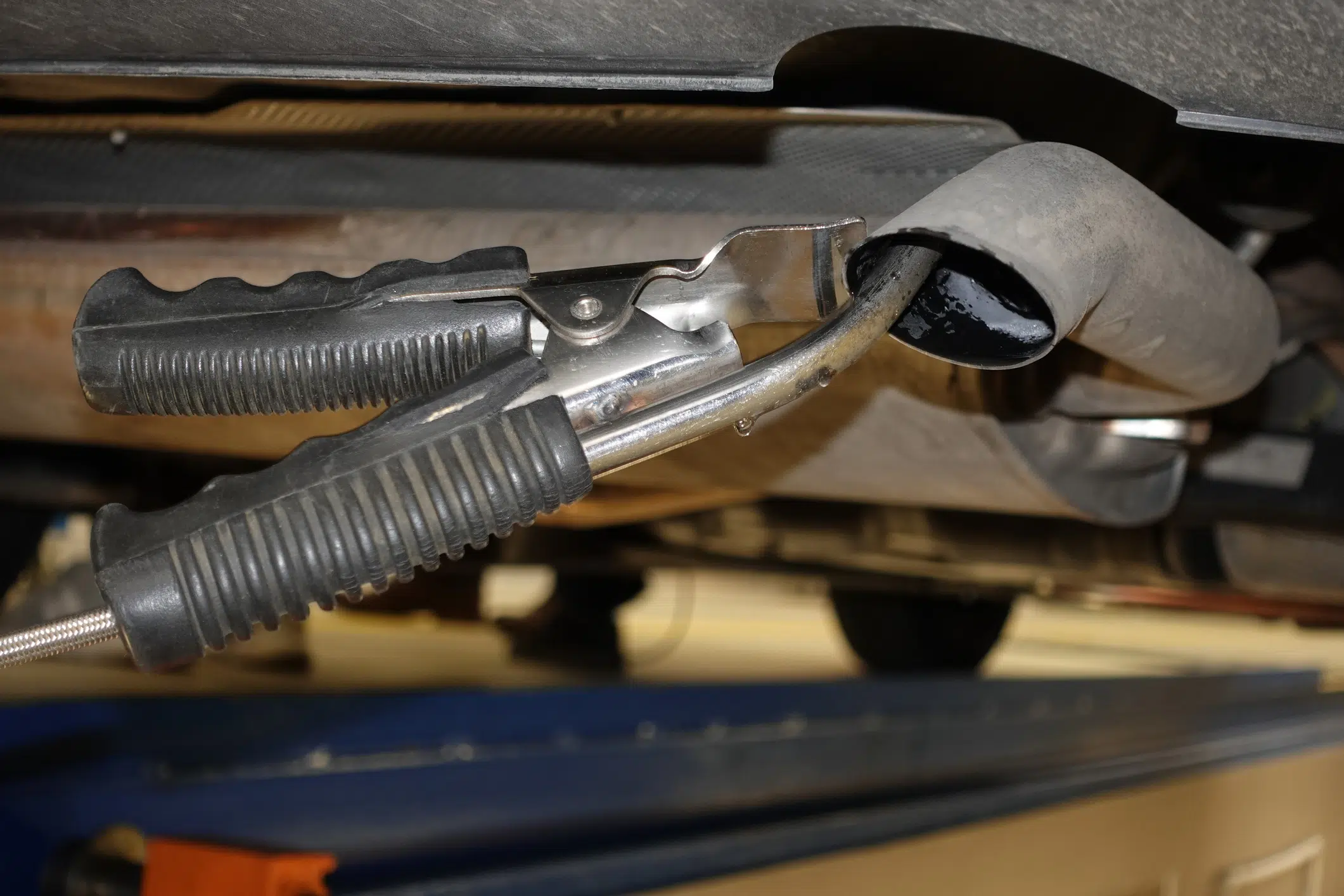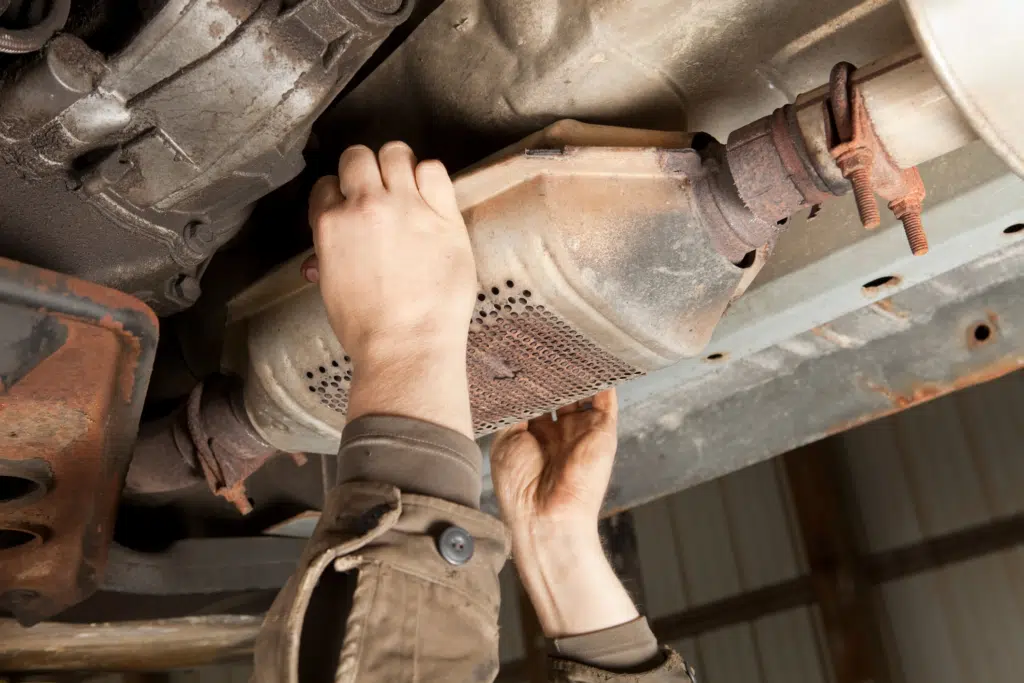Did you know that a small device called a catalytic converter plays a crucial role in reducing harmful emissions from your vehicle? This unsung hero of the automotive industry might not be something you think about often, but it has a vital role in keeping our air cleaner and our environment healthier. In this blog post, we’ll dive into the world of catalytic converters, exploring their function, different types, components, and ways to maintain and repair them. We’ll also discuss the growing problem of catalytic converter theft and share tips on protecting your vehicle from this costly crime. So buckle up and let’s hit the road to discover the fascinating world of catalytic converters!
Key Takeaways
Catalytic converters are an important part of a vehicle’s exhaust system, designed to reduce harmful pollutants.
Precious metals such as platinum, palladium and rhodium are used in catalytic converters to reduce air pollution and harmful gases but also make them a target for theft.
Regular maintenance and cleaning can help avoid failed MOTs and the associated costs & penalties.
The Role of Catalytic Converters
Integral to a vehicle’s exhaust system, catalytic converters are designed to convert harmful gases into less toxic substances via chemical reactions. They are fitted to the exhaust manifold and work by:
Directing exhaust gases over a catalyst
Triggering a chemical reaction that decomposes the pollutants
Processing the gases in such a way that they become less harmful
Releasing the processed gases through the exhaust pipe
These clever devices, known as a car’s emission control system, make an important contribution to pollution reduction by targeting harmful pollutants. They don’t significantly impede exhaust flow, and the majority of total pollution is emitted during the initial five minutes of engine operation. Modern catalytic converters help to comply with stringent regulations, such as the U.S. Environmental Protection Agency’s regulations on exhaust emissions, including exhaust gases.
Neglecting to drive with a catalytic converter can lead to substantial legal complications, including failure of the MOT test.
Types of Catalytic Converters

Catalytic converters come in a variety of types, including:
Two-way converters: These are one of the oldest systems for reducing pollutants. They use platinum and palladium to decompose carbon monoxide and hydrocarbons, both of which are detrimental to the environment. Diesel and gasoline engines in American- and Canadian-market automobiles used these extensively until 1981.
Three-way converters: These were introduced because they had the advantage of controlling oxides of nitrogen. The earlier two-way converters were rendered ineffective for this purpose.
Diesel-specific converters: These converters are designed specifically for diesel engines and target the emissions produced by these engines.
Three-way catalytic converters function similarly to two-way converters but also incorporate rhodium to filter out oxides of nitrogen. They perform three concurrent tasks: reduction of nitrogen oxides to nitrogen, and oxidation of carbon, hydrocarbons, and carbon monoxide to carbon dioxide through catalytic reactions. The ideal air-fuel ratio for engines equipped with three-way catalytic converters is between 14.6 and 14.8 parts air to one part fuel, by weight, for optimal performance.
Components and Materials

The construction of catalytic converters involves precious metals like platinum, palladium, and rhodium, in addition to a ceramic honeycomb structure. These components are crucial in facilitating the catalytic reaction necessary for selective catalytic reduction, which helps to reduce emissions.
The honeycomb structure is composed of various precious metals and serves an integral role in reducing the concentration of toxic gases emitted from the exhaust system.
Precious Metals
The precious metals used in catalytic converters play a vital role in breaking down pollutants and reducing air pollution emitted by the vehicle. Platinum and palladium work together to decrease hydrocarbon and carbon monoxide emissions, while rhodium is utilized to reduce the concentration of hazardous nitrogen oxides (NOx) gases.
These valuable metals not only contribute to cleaner air, but also make catalytic converters a prime target for theft, as their market value is quite high. For example, palladium is currently valued at £43 per gram, rhodium at £250 per gram, and platinum at over £22 per gram.
Ceramic Honeycomb Structure
The ceramic honeycomb structure in a catalytic converter consists of thousands of micro cellular channels coated with precious metals such as platinum, palladium, and rhodium. This structure is essential for facilitating the chemical reactions necessary to reduce emissions.
Ceramic honeycomb structures are made from materials such as cordierite, mullite, and alumina. They are renowned for their thermal shock resistance, making them an ideal choice for the demanding conditions within a vehicle’s exhaust system.
Identifying Catalytic Converter Issues

Spotting potential issues with your catalytic converter is key to preventing substandard performance, elevated emissions, and possible vehicle damage. Issues with the catalytic converter can be indicated by:
An increase in exhaust emissions
A decrease in engine performance
Large emissions could signal a problem
Temperature changes in the exhaust system can cause unburnt fuel to flow to the catalyst
This high temperature can harm the fine material of the catalyst
In case of any suspected issues with your catalytic converter, immediate inspection is necessary. On-board diagnostics that utilize an oxygen sensor can help detect any issues. If the catalytic converter is determined to be malfunctioning, repair should be conducted to avoid potential consequences, such as increased emissions, decreased performance, and potential damage to the vehicle.
Get help for your car from our AI Car Expert!
Catalytic Converter Maintenance and Repair

The lifespan and performance of your vehicle can be enhanced through regular maintenance and catalytic converter repair. It’s important to recognize that a catalytic converter on a vehicle that is primarily used for short start-stop trips may experience a faster rate of wear due to the engine and cat not reaching their optimal operating temperature before being shut off.
To prevent this, it is recommended to take your vehicle on longer trips at least once a year.
How to clean Catalytic Converter?
There are several methods for cleaning catalytic converters, including spraying clean water through the converter until it comes out clean. Alternatively, you can use cleaning additives, such as LIQUI MOLY Catalytic System Cleaner, which can be added to the fuel tank to help break down deposits that can accumulate in the converter and decrease its efficiency.
Best fuel additives to clean Catalytic Converter DIY?
If you prefer a DIY approach to cleaning your catalytic converter, which may involve addressing issues with the lambda sensor, some recommended fuel additives include LIQUI MOLY Catalytic System Cleaner, DuraLube Severe Catalytic and Exhaust Treatment, Cataclean, and CRC Guaranteed to Pass Emissions Test Formula.

These additives can help break down deposits, improve engine performance, and reduce emissions, ultimately extending the life of your catalytic converter.
The Rising Trend of Catalytic Converter Theft
The rising trend of catalytic converter theft can be attributed to the precious metals it contains, including platinum, palladium, and rhodium. Thieves often target hybrid vehicles, as their catalytic converters contain higher concentrations of precious metals. The potential repercussions of catalytic converter theft can include diminished vehicle performance, augmented emissions, and potential harm to the vehicle, with some cases resulting in the vehicle being declared a total loss.
To combat catalytic converter theft, various measures are being taken, such as Toyota collaborating with law enforcement and engaging with government entities to discuss potential modifications to scrap metal sales regulations that could make it more difficult for criminals to monetize stolen catalysts. Additionally, the Preventing Auto Recycling Thefts Act (PART Act) was introduced in the U.S. Senate in 2023 to combat catalytic converter theft, mandating catalytic converters in new vehicles to feature traceable identification numbers and making catalytic converter theft a criminal offense.
Preventing Catalytic Converter Theft

Strategies to prevent catalytic converter theft include thoughtful parking, the installation of security devices, and marking the converter with identifiable details.
By parking in well-lit areas with high foot traffic, you can deter potential catalytic converter theft as it increases the likelihood of the theft being witnessed.
Parking Strategies
Thoughtful parking is a key strategy in preventing catalytic converter theft. By parking in areas with adequate lighting and potential CCTV filming, the chances of a successful theft are reduced, providing a deterrent to would-be thieves.
Security Devices and Markings
Security devices such as the CatClamp or the Catloc can be installed to make the removal of the catalytic converter more difficult, thus deterring theft.
Additionally, etching or watermarking can be used to add a unique identifier to the catalytic converter, making it traceable in the event of theft.
The Cost of Catalytic Converter Replacement and Insurance Coverage

Replacement costs for a stolen or damaged catalytic converter can be substantial, often exceeding $1,000, and could increase if the vehicle incurs damage during the theft. However, insurance coverage may help offset the expense. For example, the cost of a replacement catalytic converter for a Toyota Prius can range from £140 to £480, depending on the model and year of the vehicle.
In addition to the cost of replacement, the current market value of the precious metals in catalytic converters can also be significant. Palladium is valued at £43 per gram, rhodium at £250 per gram, and platinum at over £22 per gram. This high value contributes to the growing problem of catalytic converter theft.
Legal Implications of Driving Without a Catalytic Converter

In many jurisdictions, driving without a catalytic converter is unlawful and can lead to fines, voided insurance policies, and heightened emissions. In accordance with Section 203(a)(3)(A) of the 1990 amended Clean Air Act, it is illegal to remove or disable a catalytic converter for any purpose other than its direct and immediate replacement. Additionally, Section 203(a)(3)(B) prohibits any person from selling or installing any part that would bypass, defeat, or render inoperative any emission control system, device, or design element.
If your catalytic converter is stolen, the vehicle may experience the following:
Louder noise
Illuminated warning light on the dashboard
Difficulty in accelerating
Decrease in fuel efficiency
It is crucial to address any issues with your catalytic converter as soon as possible to avoid these potential consequences.
Environmental Impact of Catalytic Converters

Even though catalytic converters aid in reducing harmful emissions, their manufacture and disposal processes can adversely affect the environment. The production of catalytic converters can have a detrimental environmental effect due to the utilization of precious metals and other materials, as well as the energy required for their production and the generation of hazardous waste.
Disposing of catalytic converters also poses an environmental risk, as it can result in the release of hazardous materials into the atmosphere. However, catalytic converters contain valuable metals which can be recycled and reused, reducing the environmental impact associated with their disposal.
Avoiding failed MOT by cleaning the catalytic converter DIY with LIQUI MOLY additive

By improving the converter’s performance and lowering emissions, cleaning the catalytic converter with a LIQUI MOLY additive can help circumvent a failed MOT. To clean a catalytic converter DIY with a LIQUI MOLY additive, simply follow these steps:
Add the additive to the fuel tank.
Allow it to act for the specified duration.
Drive the vehicle for a short distance to facilitate the additive in cleaning the catalytic converter.
By regularly cleaning your catalytic converter with a LIQUI MOLY additive, you can help ensure that it is operating correctly and will pass the emissions test during your vehicle’s MOT. This simple DIY maintenance task can save you from potential fines, invalidated insurance policies, and increased emissions associated with a failed MOT.
Summary
In conclusion, catalytic converters play a crucial role in reducing harmful emissions from vehicles, helping to keep our air cleaner and our environment healthier. Understanding the types, components, and maintenance requirements of catalytic converters is essential for vehicle owners. Additionally, being aware of the rising trend of catalytic converter theft and implementing preventive measures can save you from costly replacement expenses and potential legal consequences.
By regularly maintaining and cleaning your catalytic converter, you can prolong its life, improve your vehicle’s performance, and contribute to a cleaner environment for all. So, take the time to learn about and care for your catalytic converter – it’s a small step that can make a big difference in the world.
Frequently Asked Questions
What do catalytic converters do?
Catalytic converters filter out harmful byproducts from exhaust gases and convert them to less harmful substances through chemical reactions. This reduces air pollution and improves the efficiency of cars manufactured after 1993, which must have a catalytic converter fitted to their exhaust.
How much does a catalytic converter cost UK?
Replacing a catalytic converter in the UK can be costly, ranging from £150 to over £1000.
It is an important component and should not be ignored.
What is in a catalytic converter that is so valuable?
Catalytic converters contain three platinum-group metals – platinum, palladium, and rhodium – that are all more valuable than gold in the PGM market.
These metals are used to reduce the amount of harmful emissions from vehicles, making them an important part of the automotive industry.
The demand for these metals is increasing as more countries adopt stricter emissions standards, driving up the price of PGMs.
What are the different types of catalytic converters?
Catalytic converters come in a variety of types including two-way, three-way and diesel-specific designs, each tailored to meet different emissions requirements.
